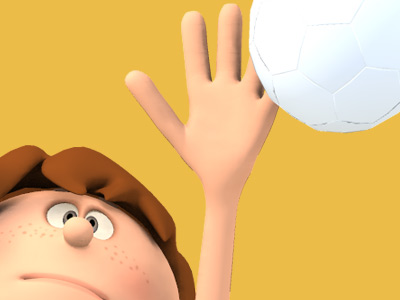Volleyball Formations
The three standard volleyball formations are known as "4–2", "6–2" and "5–1", which refers to the number of hitters and setters respectively. 4–2 is a basic formation used only in beginners' play, while 5–1 is by far the most common formation in high-level play.
4–2
The 4–2 formation has four hitters and two setters. The setters usually set from the middle front or right front position. The team will therefore have two front-row attackers at all times. In the international 4–2, the setters set from the right front position. The international 4–2 translates more easily into other forms of offense.
The setters line up opposite each other in the rotation. The typical lineup has two outside hitters. By aligning like positions opposite themselves in the rotation, there will always be one of each position in the front and back rows. After service, the players in the front row move into their assigned positions, so that the setter is always in middle front. Alternatively, the setter moves into the right front and has both a middle and an outside attacker; the disadvantage here lies in the lack of an offside hitter, allowing one of the other team's blockers to "cheat in" on a middle block.
The clear disadvantage to this offensive formation is that there are only two attackers, leaving a team with fewer offensive weapons.
Another aspect is to see the setter as an attacking force, albeit a weakened force, because when the setter is in the front court they are able to 'tip' or 'dump', so when the ball is close to the net on the second touch, the setter may opt to hit the ball over with one hand. This means that the blocker who would otherwise not have to block the setter is engaged and may allow one of the hitters to have an easier attack.
6–2
In the 6–2 formation, a player always comes forward from the back row to set. The three front row players are all in attacking positions. Thus, all six players act as hitters at one time or another, while two can act as setters. So the 6–2 formation is actually a 4–2 system, but the back-row setter penetrates to set.
The 6–2 lineup thus requires two setters, who line up opposite to each other in the rotation. In addition to the setters, a typical lineup will have two middle hitters and two outside hitters. By aligning like positions opposite themselves in the rotation, there will always be one of each position in the front and back rows. After service, the players in the front row move into their assigned positions.
The advantage of the 6–2 is that there are always three front-row hitters available, maximizing the offensive possibilities. However, not only does the 6–2 require a team to possess two people capable of performing the highly specialized role of setter, it also requires both of those players to be effective offensive hitters when not in the setter position. At the international level, only the Cuban National Women's Team employs this kind of formation. It is also used in Women's NCAA play, partially due to the variant rules used which allow 12 substitutions per set (as opposed to the 6 allowed in the standard rules).
5–1
The 5–1 formation has only one player who assumes setting responsibilities regardless of his or her position in the rotation. The team will therefore have three front-row attackers when the setter is in the back row, and only two when the setter is in the front row, for a total of five possible attackers.
The player opposite the setter in a 5–1 rotation is called the opposite hitter. In general, opposite hitters do not pass; they stand behind their teammates when the opponent is serving. The opposite hitter may be used as a third attack option (back-row attack) when the setter is in the front row: this is the normal option used to increase the attack capabilities of modern volleyball teams. Normally the opposite hitter is the most technical skilled hitter of the team. Back-row attacks generally come from the back-right position, known as zone 1, but are increasingly performed from back-center in high-level play.
The big advantage of this system is that the setter always has 3 hitters to vary sets with. If the setter does this well, the opponent's middle blocker may not have enough time to block with the outside blocker, increasing the chance for the attacking team to make a point.
There is another advantage, the same as that of a 4–2 formation: when the setter is a front-row player, he or she is allowed to jump and "dump" the ball onto the opponent's side. This too can confuse the opponent's blocking players: the setter can jump and dump or can set to one of the hitters. A good setter knows this and thus won't only jump to dump or to set for a quick hit, but when setting outside as well to confuse the opponent.
The 5–1 offense is actually a mix of 6–2 and 4–2: when the setter is in the front row, the offense looks like a 4–2; when the setter is in the back row, the offense looks like a 6–2.
SPORTS

RESOURCES
This article uses material from the Wikipedia article "Volleyball", which is released under the Creative Commons Attribution-Share-Alike License 3.0.
© Stories Preschool. All Rights Reserved.









